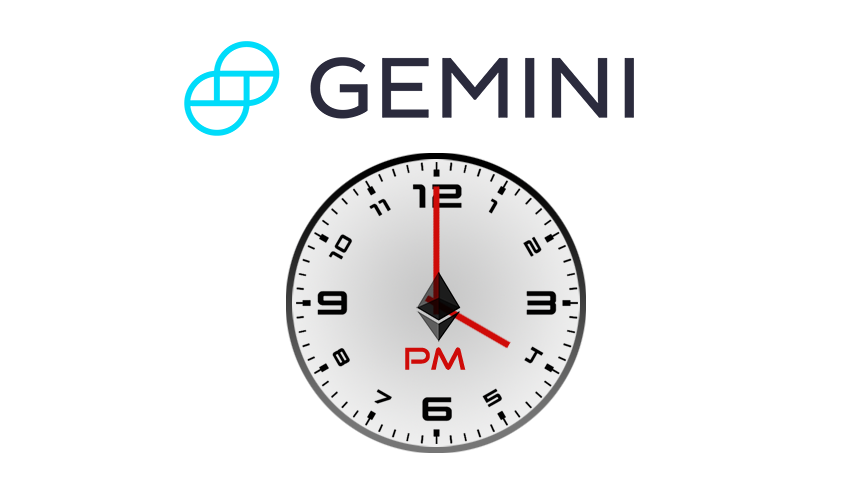Gemini, the New York registered digital asset exchange has announced they will be launching a daily 4:00 p.m. Eastern Time Ether (ETH) auction starting on Friday, July 28, 2017. The mechanics will be the same as its bitcoin auctions.
Daily auctions are universally implemented by traditional asset exchanges like the New York Stock Exchange, Nasdaq, and Bats. They increase price discovery and transparency, and they reduce costs across the board by making sure that buyers and sellers don’t miss each other during the trading day.
The Gemini team led by Cameron Winklevoss, Co-Founder, and President of Gemini said they are confident that its Auction will bring users the benefits of over-the-counter (OTC) trading without the overhead, hassle, and lack of transparency.
How Do Auctions Benefit Gemini Customers?
Auctions aim to facilitate high volumes of trading between customers at a fair price by matching the maximum quantity to be bought and sold. Auctions provide the following benefits to customers:
- Greater Price Discovery: Auctions focus market participants and economic information at a single moment in the day, resulting in better price discovery.
- Deeper Liquidity: Execute larger trades with less market price impact or “slippage.” Because Auctions are at a single moment in the day, more buyers and sellers are able to converge and provide more liquidity on both sides of the market.
- Mark-to-Market Benchmark Price: Auctions provide an official 4:00 p.m. ET end-of-day price for marking assets to market (e.g., for accounting purposes or for calculating returns).
- Instant Settlement: Auction trades settle immediately and funds are ready for immediate transfer (unlike OTC trades that can require phone calls, emails, specialized paperwork, risk during funds transfer, etc.).
- No Counterparty Risk: Auction trades settle immediately from pre-funded accounts, eliminating the risk that your counterparty will back out of a trade (unlike OTC trades which are typically not pre-funded).
How Do Auctions Work?
All eligible orders are filled at the final auction price. The final auction price of each Auction is determined by finding the price at which the greatest aggregate buy demand and aggregate sell demand from all participating orders can be filled (i.e., the price at which the largest quantity can trade). The mechanics of this auction are very similar to the closing auction (or “closing cross”) on the major electronic U.S. stock exchanges (e.g., Nasdaq, NYSE Arca, Bats).
How Can Users Participate in Auctions?
Customers can enter Auction-Only (AO) Market and Auction-Only (AO) Limit Orders to buy or to sell beginning well before the Auction time.
Beginning 10 minutes before the Auction time, indicative auction prices are broadcast via both Gemini’s market data API and their website frontend. A new indicative auction price is calculated every minute until the Auction time, based on the order book at that time, and every 15 seconds during the final minute. (These indicative prices are calculated by simulating the auction process for the order books if Auction were to occur at that time.)
How to Buy or Sell Large Quantities in Gemini’s Daily Auctions:
Leading up to auction, liquidity providers place Auction-Only Orders on both the bid side and offer side of the market. These liquidity providers often compete for greater influence in the auction by tightening these spreads. That ultimately benefits all Auction participants.
These liquidity providers also monitor the indicative auction prices. If they observe new liquidity demands in a particular Auction, they stand ready to modify their own Auction-Only Orders in order to facilitate liquidity demands. If a trader wants to buy or sell a large quantity during one of the Auctions, Gemini recommends that the trader submits it approximately 10 minutes before the Auction time. This will give liquidity providers time to respond and to give the order access to increased liquidity.






















